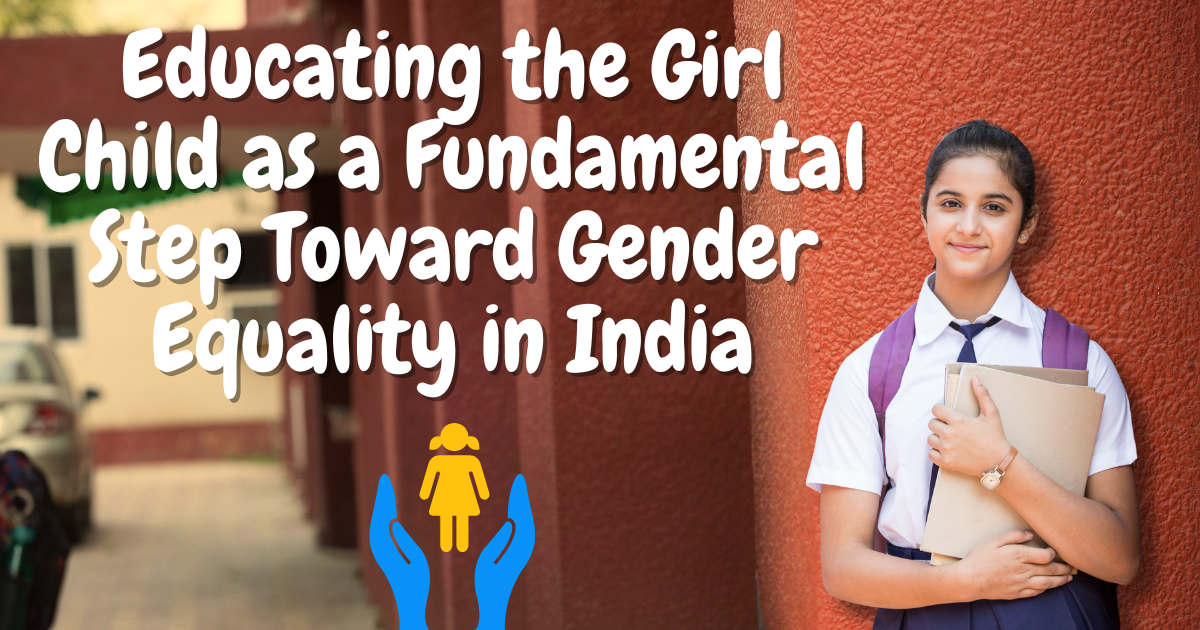Educating the Girl Child as a Fundamental Step Toward Gender Equality in India. From an earlier time, gender bias had been prevailing in India due to the mentality of some people that boys are superior and more capable than women. The education of the girl child has changed everything. Gender equality has been a campaign for women to provide them with justice. To know more about the topic “Educating the Girl Child as a Fundamental Step Toward Gender Equality in India”, read the complete article.
Educating the Girl Child as a Fundamental Step Toward Gender Equality in India
In India, it is very difficult to attain maximum gender equality as the girl child is killed as soon as she is born. Even if she is not killed, getting an education is another challenging step for her. As the campaigns and schemes are launched by the government, more and more people are understanding the value of educating a girl child and are raising their voices in favour of girls. Girls often lack education due to poverty and gender bias. The boys are sent to school thinking they will become something in the future, but the girls are kept in homes only.

If India wants to attain gender equality, girls’ education should be promoted. Girls will be able to compete with boys in many fields if they are provided proper education. Educated girls are more likely to stand up for their rights, fight against child marriage, and challenge stereotypes that hold them back. It is crucial to provide quality education to girls if the country and its people want to be developed. The educated girls have more knowledge of right and wrong and are able to make decisions for themselves.
How to Promote Gender Equality Through Education?
The best way of promoting gender equality is through education. If the girls are educated, they are able to fight for themselves and prevent gender bias. As more girls get educated, the entire society benefits from greater gender equality. Girl child education in India is not just about individual girls; it’s about creating a society where everyone, regardless of gender, has the same opportunity to succeed.
According to a recent UNICEF poll, 35 per cent of girls drop out of school owing to marriage and 33 per cent due to engagement in domestic labour. If India wants to be perceived as a highly developed nation and one of the leading voices in world affairs, then it must focus on girl education and work hard to ensure that there are no gaps and that education is openly and freely offered to both genders.
The government has been initiating continuous efforts to raise the status of the girl child in society as well as incentivise her education via several schemes and programmes to remove the gender inequality. These have undoubtedly helped girls’ education to some degree, but much more work has to be done before girls and boys are treated equally. Also, parents must be given the knowledge of the health risks of teenage pregnancy and thus need to abolish child marriages.
Hurdles in Education and Gender Equality
Survival
The first step for a girl to get an education is to survive. There are still many places where a girl child is killed in the stomach (abortion), while some kill her after birth. People think of girls as a financial burden and boys as a source of income. To get equal rights for education, strict rules must be applied to these social evils and campaigns must be run to provide people education about the importance of girl education.
Poverty
Due to poverty many girls are left uneducated, thinking they might as well not even need them. If the family has enough money to send one child to school, they will probably choose their son over their daughter for education. This is due to the mentality that the boys are born to be the earners of the family, while the girl is to work at home only.
Early Marriage and Child Birth
Many rural people marry their daughters at a very young age and they are sent to their in-laws. Mostly in-laws don’t want the girl to study more and she has to leave her education. The girls are made pregnant before 18 in many villages, which also has a harmful effect on her and the child’s health.
